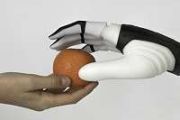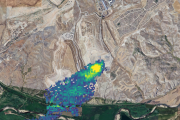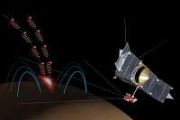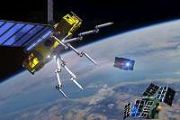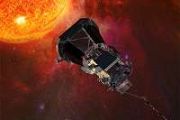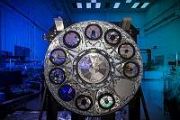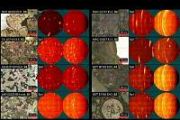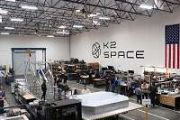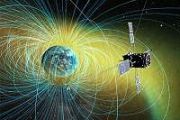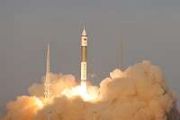
Copernical Team
Chinese astronauts return to earth after six months in space

Ariane 6 gets its wings
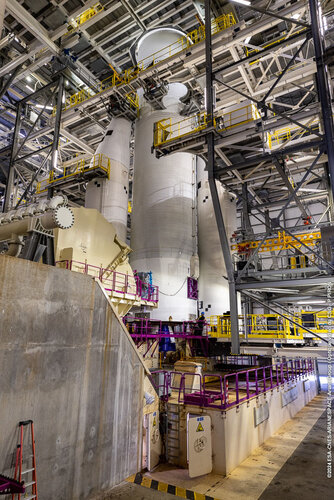 Image:
Ariane 6's boosters are connected to the rocket's central core
Image:
Ariane 6's boosters are connected to the rocket's central core Smiles all round: Vega-C to launch ESA solar wind mission
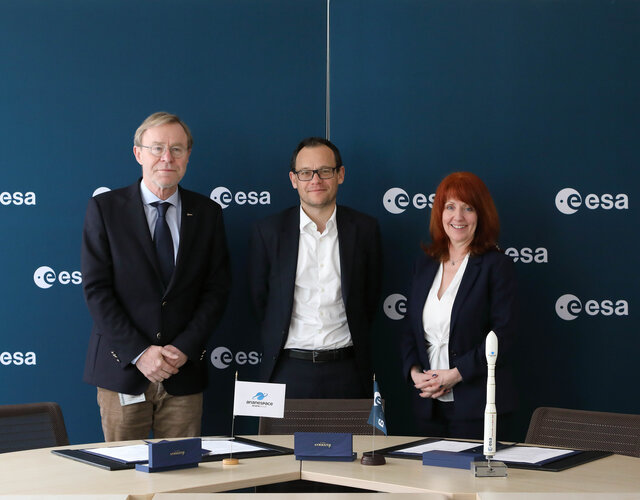
ESA ensures a ride into space for its Smile mission, with Arianespace signing up to launch the spacecraft on a Vega-C rocket
Galileo satellite constellation expands with two new additions
 The Galileo navigation system has expanded its constellation with the addition of two new satellites, launched early on Sunday, 28 April, at 01:34 BST/02:34 CEST. This latest expansion brings the total to 30 satellites, enhancing Galileo's capabilities in terms of reliability, robustness, and precision, which benefits billions of global users.
Galileo, operational since 2016 and recognized
The Galileo navigation system has expanded its constellation with the addition of two new satellites, launched early on Sunday, 28 April, at 01:34 BST/02:34 CEST. This latest expansion brings the total to 30 satellites, enhancing Galileo's capabilities in terms of reliability, robustness, and precision, which benefits billions of global users.
Galileo, operational since 2016 and recognized ESA advances two Thales Alenia Space AI projects for Fsat-2 orbital tests
 The European Space Agency (ESA) has chosen Thales Alenia Space's IRMA and PhiFireAI projects for in-orbit testing aboard the Fsat-2 microsatellite. Scheduled for a June 2024 launch, this 6U CubeSat will explore how artificial intelligence (AI) can enhance Earth observation satellites to address social, economic, and environmental issues.
Initiated in early 2023, the ESA's challenge involve
The European Space Agency (ESA) has chosen Thales Alenia Space's IRMA and PhiFireAI projects for in-orbit testing aboard the Fsat-2 microsatellite. Scheduled for a June 2024 launch, this 6U CubeSat will explore how artificial intelligence (AI) can enhance Earth observation satellites to address social, economic, and environmental issues.
Initiated in early 2023, the ESA's challenge involve China's rocket engine test sets new thrust record
 China Aerospace Science and Technology Corp, the country's key space contractor, conducted a critical test on Sunday on a new type of rocket engine, achieving the highest thrust power ever achieved in tests of Chinese liquid-propellant engines.
The test involved a combined ignition of four engines at an engine testing facility in Fengxian county, Shaanxi province. These engines were connec
China Aerospace Science and Technology Corp, the country's key space contractor, conducted a critical test on Sunday on a new type of rocket engine, achieving the highest thrust power ever achieved in tests of Chinese liquid-propellant engines.
The test involved a combined ignition of four engines at an engine testing facility in Fengxian county, Shaanxi province. These engines were connec Rocket Lab schedules dual launches for NASA's climate satellite missions
 Rocket Lab USA, Inc. (Nasdaq: RKLB) is gearing up for two consecutive Electron rocket launches to deploy satellites for NASA's Polar Radiant Energy in the Far-InfraRed Experiment (PREFIRE) mission.
The company plans to launch the satellites into a 525km circular orbit from its Launch Complex 1 in Mahia, New Zealand. The initial mission, dubbed 'Ready, Aim, PREFIRE,' is slated for no earli
Rocket Lab USA, Inc. (Nasdaq: RKLB) is gearing up for two consecutive Electron rocket launches to deploy satellites for NASA's Polar Radiant Energy in the Far-InfraRed Experiment (PREFIRE) mission.
The company plans to launch the satellites into a 525km circular orbit from its Launch Complex 1 in Mahia, New Zealand. The initial mission, dubbed 'Ready, Aim, PREFIRE,' is slated for no earli Redefining engineering practices across NASA
 Since John F. Kennedy's landmark 1961 address advocating for lunar exploration, NASA has continually embraced the challenge of difficult endeavors to stimulate innovation across its varied missions. Kennedy articulated this ethos when he said, "We choose to go to the Moon not because it's easy, but because it's hard; because that goal will serve to organize and measure the best of our energies a
Since John F. Kennedy's landmark 1961 address advocating for lunar exploration, NASA has continually embraced the challenge of difficult endeavors to stimulate innovation across its varied missions. Kennedy articulated this ethos when he said, "We choose to go to the Moon not because it's easy, but because it's hard; because that goal will serve to organize and measure the best of our energies a PREFIRE mission will analyze polar energy exchanges
 NASA, in collaboration with Rocket Lab, has scheduled the first launch for the PREFIRE (Polar Radiant Energy in the Far-InfraRed Experiment) mission on Wednesday, May 22, 2024. The mission aims to enhance our understanding of polar energy dissipation and its implications on global climate dynamics.
The launch from Launch Complex 1 in Mahia, New Zealand, marks the beginning of a series of t
NASA, in collaboration with Rocket Lab, has scheduled the first launch for the PREFIRE (Polar Radiant Energy in the Far-InfraRed Experiment) mission on Wednesday, May 22, 2024. The mission aims to enhance our understanding of polar energy dissipation and its implications on global climate dynamics.
The launch from Launch Complex 1 in Mahia, New Zealand, marks the beginning of a series of t UC Irvine study bolsters dark matter existence theory
 Astronomers from the University of California, Irvine have used computer simulations to support the existence of dark matter, a critical component thought necessary to explain various cosmic phenomena. These simulations contribute to the ongoing debate about whether the universe's workings can be solely attributed to observable matter or if invisible elements like dark matter are required.
Astronomers from the University of California, Irvine have used computer simulations to support the existence of dark matter, a critical component thought necessary to explain various cosmic phenomena. These simulations contribute to the ongoing debate about whether the universe's workings can be solely attributed to observable matter or if invisible elements like dark matter are required. 








